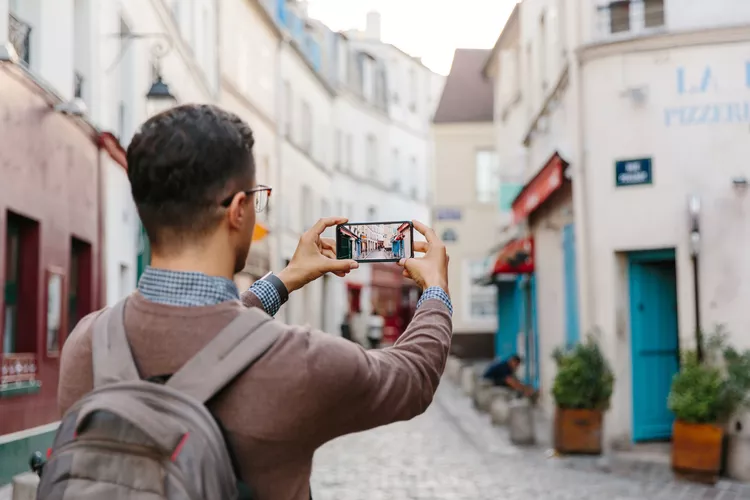Article Summary
Photography Laws Overview
It has happened to almost everyone. You are on vacation, hoping to bring home some terrific photos of your trip. At a museum, church, or even a train station, you pull out your camera and take a few pictures. The next thing you know, an official-looking security person turns up and asks you to delete your photos, or, even worse, hand over your camera’s memory card. Is this legal?
The answer to this question depends on where you are. Regardless of your location, your host country probably prohibits photography at military installations and essential transportation sites. Privately-owned businesses, including museums, can restrict photography, although their legal right to confiscate your camera if you break the rules varies by country.
United States Photography Regulations
In the United States, each state has its own photography restrictions. State and local regulations vary, but all photographers, amateur and professional, must comply with them.
Typically, photography in public places is permitted, unless special equipment that allows the photographer to take pictures of private locations is used. For example, you can take a photo in a public park, but standing in that park and using a telephoto lens to take a picture of people inside their home is prohibited.
Privately-owned museums, shopping malls, tourist attractions, and other businesses may restrict photography as they wish. For instance, if you are taking photographs in an organic market, and the owner asks you to stop, it is essential to comply. Many museums prohibit the use of tripods and specialized lighting.
Operators of potential terrorist targets, such as the Pentagon, may forbid photography. This may include military installations, dams, train stations, and airports. When in doubt, it is wise to ask for clarification.
Some museums, national parks, and tourist attractions only allow visitors to take photographs for personal use. These images cannot be used for commercial purposes. To understand specific photography policies at attractions, you can directly contact the press office or consult the Press Information section on the attraction’s website.
If you take pictures of people in public places and wish to use those photos for commercial purposes, it is a requirement to obtain a signed model release from every person who is recognizable in those photographs.
United Kingdom Photography Guidelines
Photography in public places is allowed in the United Kingdom, albeit with some exceptions.
Taking photographs of military installations, aircraft, or ships is not permitted in the UK. Certain Crown properties, such as dockyards and weapons storage facilities, also impose restrictions. Indeed, any location that might be considered a target for terrorist activities is off-limits to photographers. This encompasses train stations, nuclear power plants, Underground (subway) stations, and Civil Aviation installations, for instance.
You may not take photographs inside many places of worship, even those that are tourist destinations. Examples include Westminster Abbey and St. Paul’s Cathedral in London. Always ask for permission before you begin taking pictures.
Similar to the US, certain tourist attractions, including Royal Parks, Parliament Square, and Trafalgar Square, may permit photography solely for personal use.
Many museums and shopping centers in the UK impose a ban on photography.
Exercise caution when taking photographs of individuals in public places, particularly children. Although taking photos of individuals in public places is legally permitted, British courts increasingly find that individuals engaged in private behavior, even when in public, have the right not to be photographed.
Other Photography Restrictions Worldwide
Internationally, military bases, airfields, and shipyards are off-limits to photographers in most countries. Some regions may also prohibit photographing government buildings.
Countries like Italy impose restrictions on photography in train stations and other transportation facilities. Furthermore, in certain countries, you may need to seek permission before photographing people or publishing photographs of them. Wikimedia Commons maintains a partial list of photography permission requirements by country.
In countries divided into states or provinces, such as Canada, photography regulations may vary depending on the specific state or province. It is prudent to verify the photography permission requirements for each state or province you plan to visit.
Watch for “No Photography” signs inside museums. If you do not see one, it is best to inquire about the museum’s photography policy before taking out your camera.
Some museums may have licensed photography rights to certain companies or borrowed items for special exhibits, necessitating a photography ban. Examples include the Vatican Museum’s Sistine Chapel in Rome, Michelangelo’s sculpture of David in Florence’s Galleria dell’Accademia, and The O2’s British Music Experience in London.
Conclusion
Above and beyond legal restrictions, exercising common sense should always prevail. Do not photograph other people’s children. Think twice before capturing images of military bases or runways. Always ask for permission before taking pictures of strangers, as their cultural beliefs or faith traditions may prohibit photographing individuals, even in public.





